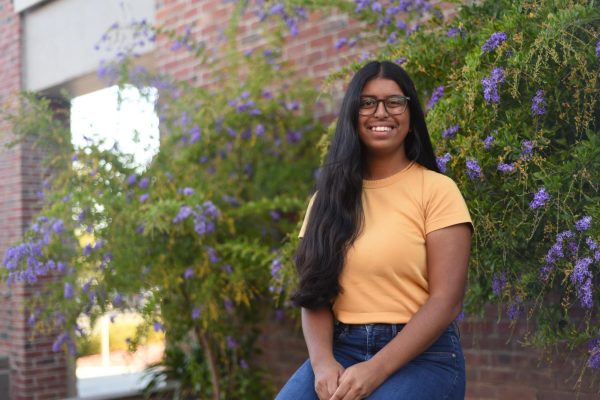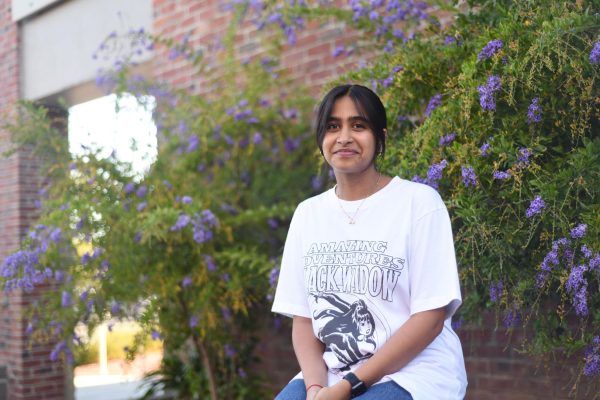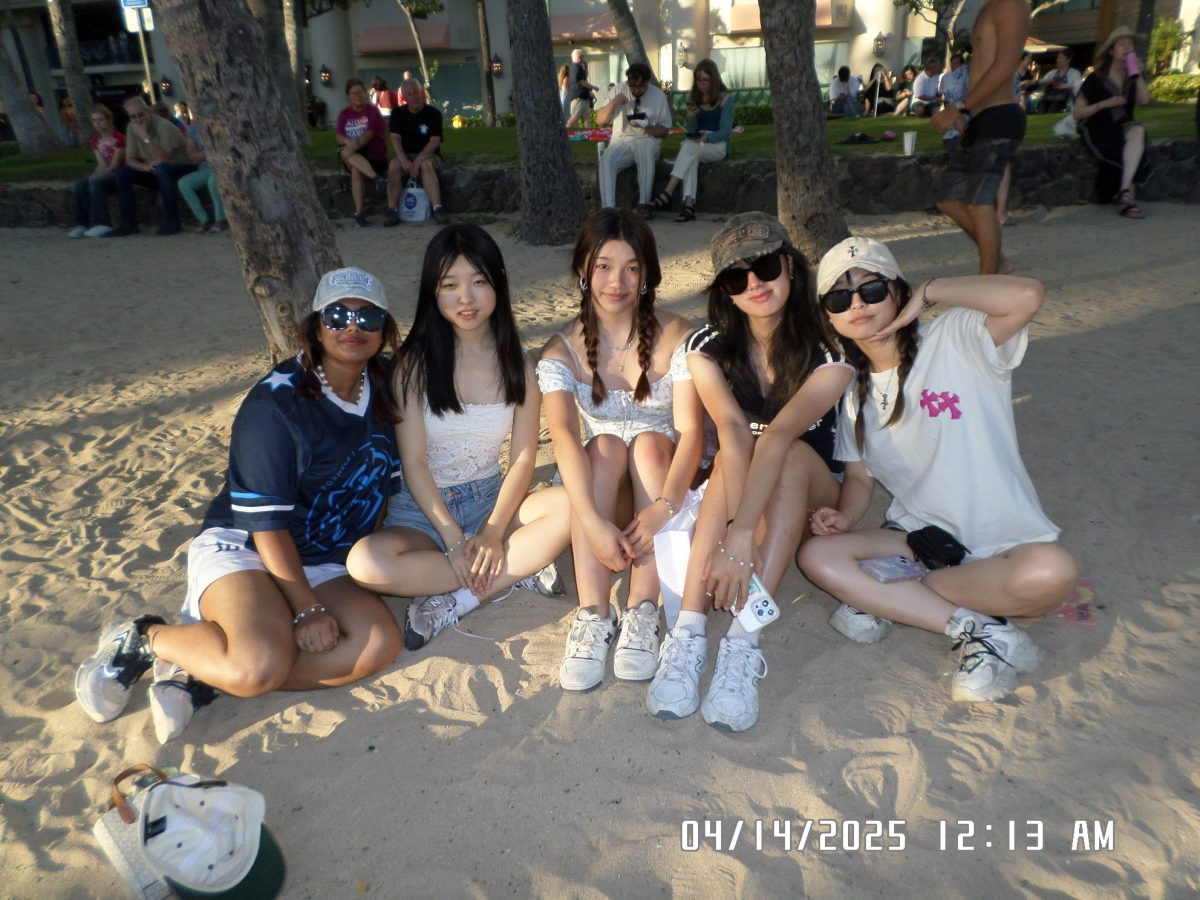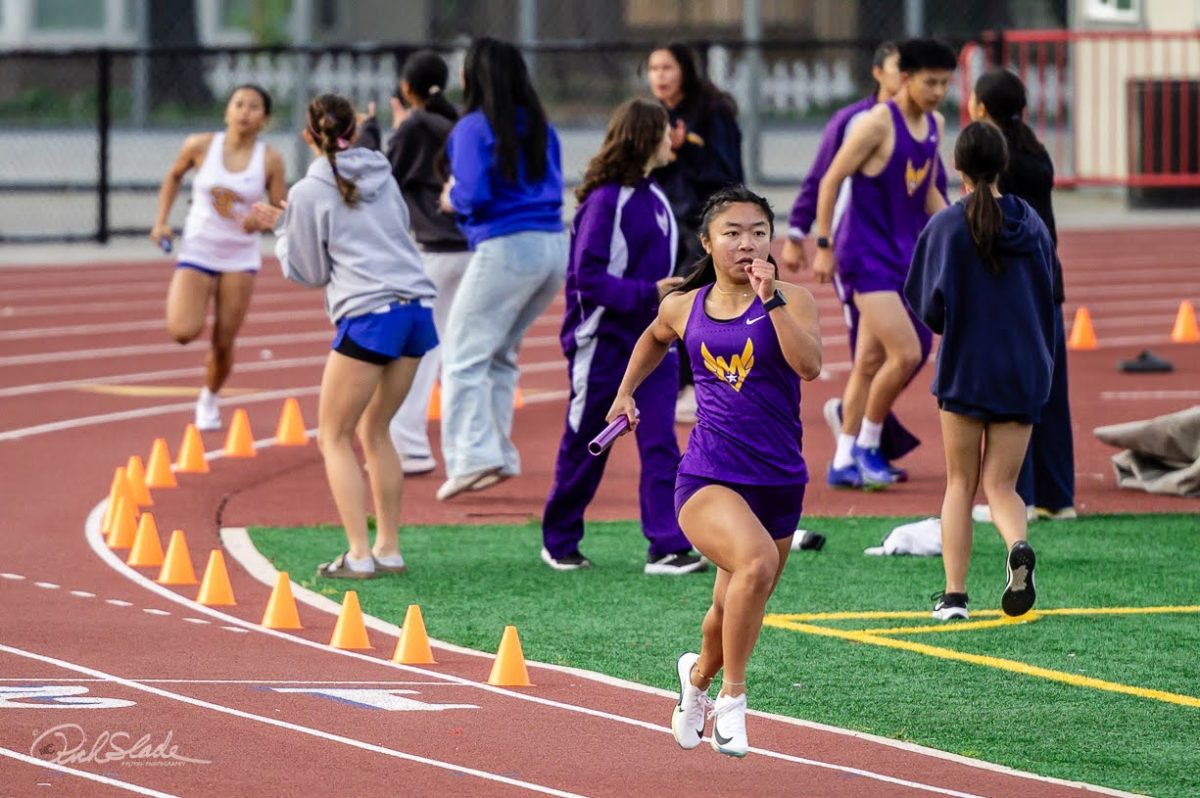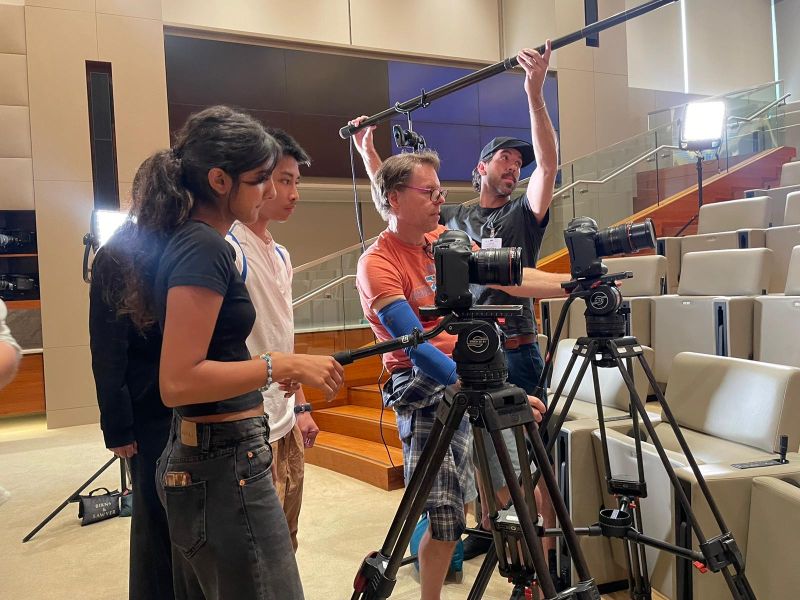Ten years ago, paraeducator and head football coach Ceazar Agront spent every day working from 5 a.m. to 11 p.m. running his own business and coaching football at Homestead High School. He disliked the high-stress lifestyle, but he wasn’t sure where his career was headed until the HHS head football coach pointed out that he was not only good at working with kids, but fulfilled by it. Having been around kids with disabilities from a young age, he was particularly drawn to special education, so he shifted to the role of paraeducator.
In his nine years as a paraeducator at MVHS, Agront has worked with a wide range of students. This includes students with physical or mental disabilities who take special education classes full-time, as well as general education students who need support with executive functioning. He says that although paraeducator training and child psychology courses have been helpful, the most important thing as a paraeducator is character: treating every student with empathy and patience. Paraeducator Yasmine Elgohary agrees, saying that even if it takes time, empathy pays off.
“When you are feeling comfortable with someone, regardless of whether they are teachers, educators or other grown-ups, it makes life smoother,” Elgohary said. “I have one student who is autistic. He doesn’t like to talk to anyone. He doesn’t wave to anyone, but when he sees me, he waves and he smiles. It makes my day, because I feel that I am a good support for him, and he feels safe when I’m around.”
Agront and Elgohary believe patience and empathy are foundational qualities for paraeducators, in addition to adapting their roles to fit each student’s unique personality and needs. They learn about these needs from reports by students’ previous special education teachers and by spending time with students. Because of this variation, whenever Biology and Health teacher Pooya Hajjarian notices a paraeducator assigned to a student in his classes, he sets up a meeting to discuss what they each need to do to best support the students as well as each other.
“I think it’s really important to have that meeting in the beginning,” Hajjarian said. “I didn’t fully realize until a few years ago that paraeducators spend an entire school year in my classroom, and I often don’t even ask them, ‘How are things going for you?’ So I decided to be more intentional about having that open line of communication.”
Even when teachers are supportive, Agront notes that there are still struggles that come with being a paraeducator. For him, the toughest part is balancing when interventions are necessary versus potentially counterproductive, especially for students who struggle with spiraling or certain ways of acting out.
“You’ve got to let them do whatever they’ve got to do to get it out of their system,” Agront said. “Sitting there, you want to help them, but sometimes the best way to help them is just to let them get it out of their system and then talk about it, debrief and try to get them back on track.”
Regardless of the difficulties, Agront keeps his focus on the students, doing his best to ensure that his students aren’t limited by their disability or the stigma that comes with it. He encourages them to try their best and take advantage of their time in high school.
“Whatever we do, it’s always trying to make sure that the students can challenge themselves and learn,” Agront said. “It’s always revolving about how they can find success, not how we can just push them through. I want all the students to understand that it’s this one time in high school to have fun, and in a sense, have this worry-free time, so just live it, have fun and get experiences.”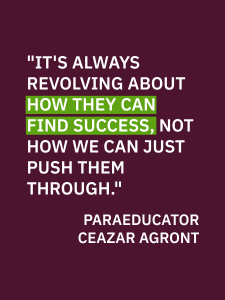
To help his students push their limits, he tries to connect emotionally with all of them, regardless of whether they are athletes or students from the special education department. Agront’s goal is to bring them not just valuable experiences, but also a mindset that will serve them later in life.
“I want my students to understand that just because you are in a different classification or designation doesn’t necessarily put you in a box,” Agront said. “Just because you’re in special education doesn’t necessarily change what type of life you can have for yourself. Just because people say you can’t doesn’t mean that you have to accept that word. You can figure out ways to do it.”
Even though the stigma around special education can affect students inside and outside of the classroom, Elgohary mentions that the best thing that general education students can do is to help special education students by showing them respect and care, something Hajjarian has often noticed when he sees general education students interact with students who have paraeducators in his classes.
Agront explains that showing empathy and kindness is essential when helping special education students. He also tries to teach these values as a father by exposing his sons to students with disabilities so that they’ll learn to be respectful and caring to everyone. For example, he once brought his son to hang out with his student, who was physically disabled and in a wheelchair.
“They had a blast,” Agront said. “They were just playing sports because I was in charge of handling my student’s P.E. time. I thought, all right, if my son’s going to be here for an hour, I want him to be around and understand what it’s like.”
Agront and Elgohary both emphasize the importance of showing respect and care – not just toward students with paraeducators but also toward paraeducators themselves. They note that the school community should be involved in helping and supporting them, whether it’s offering to explain a concept or being open to understanding students who learn or communicate differently. Ultimately, they say, their work is about the students’ progress and success.
“When you support those students, you see their journey of four years and there’s an impact from you to them, it makes a difference,” Elgohary said. “The students get it when you do something from your heart.”




